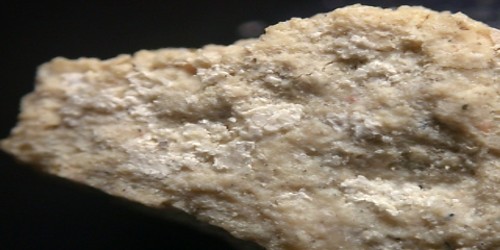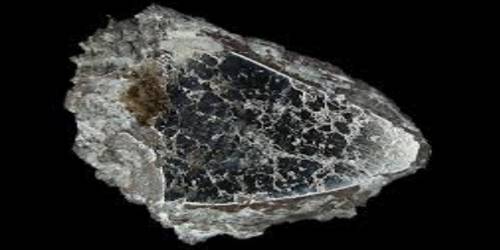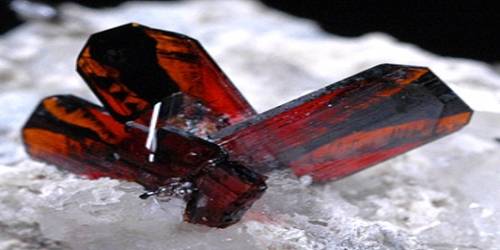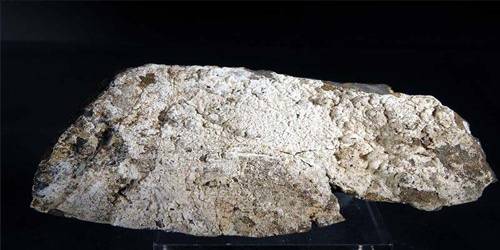Hectorite is a rare soft, greasy, white clay mineral with a chemical formula of Na0.3(Mg, Li)3 Si4O10(OH)2. It is a basic silicate of magnesium and lithium; it is a clay mineral of the montmorillonite group. It is mostly used in making cosmetics, but has used in chemical and other industrial applications, and is a mineral source for refined lithium metal.
Hectorite was first described in 1941 and named for an occurrence in the United States near Hector (in San Bernardino County, California, 30 miles east of Barstow.)
General Information
- Category: Phyllosilicates Smectite
- Formula: Na3(Mg, Li)3 Si4O10(OH)2
- Crystal system: Monoclinic
- Crystal class: Prismatic (2/m) (same H-M symbol
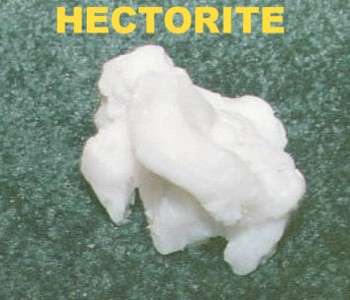
Properties
Despite its rarity, it is economically viable as the Hector mine sits over a large deposit of the mineral. The Hectorite deposits in California were probably formed by hydrothermal activity. The clay was an alteration of volcanic ash or tuff in restricted alkaline lakes, heated by hot spring activity.
- Color: White, cream, pale brown, mottled
- Crystal habit: Thin laths and aggregates
- Fracture: Uneven
- Mohs scale hardness: 1 – 2
- Luster: Earthy to waxy
- Streak: White
- Diaphaneity: Translucent to opaque
- Specific gravity: 2-3
Occurrence: In a bentonite deposit, altered from clinoptilolite derived from volcanic tu® and ash with high glass content, related to hot spring activity (Hector, California, USA).
Hectorite occurs with bentonite as an alteration product of clinoptilolite from volcanic ash and tuff with a high glass content. Hectorite is also found in the beige/brown clay ghassoul, mined in the Atlas Mountains in Morocco.
Association: Calcite, clinoptilolite (Hector, California, USA)
Information Source:
